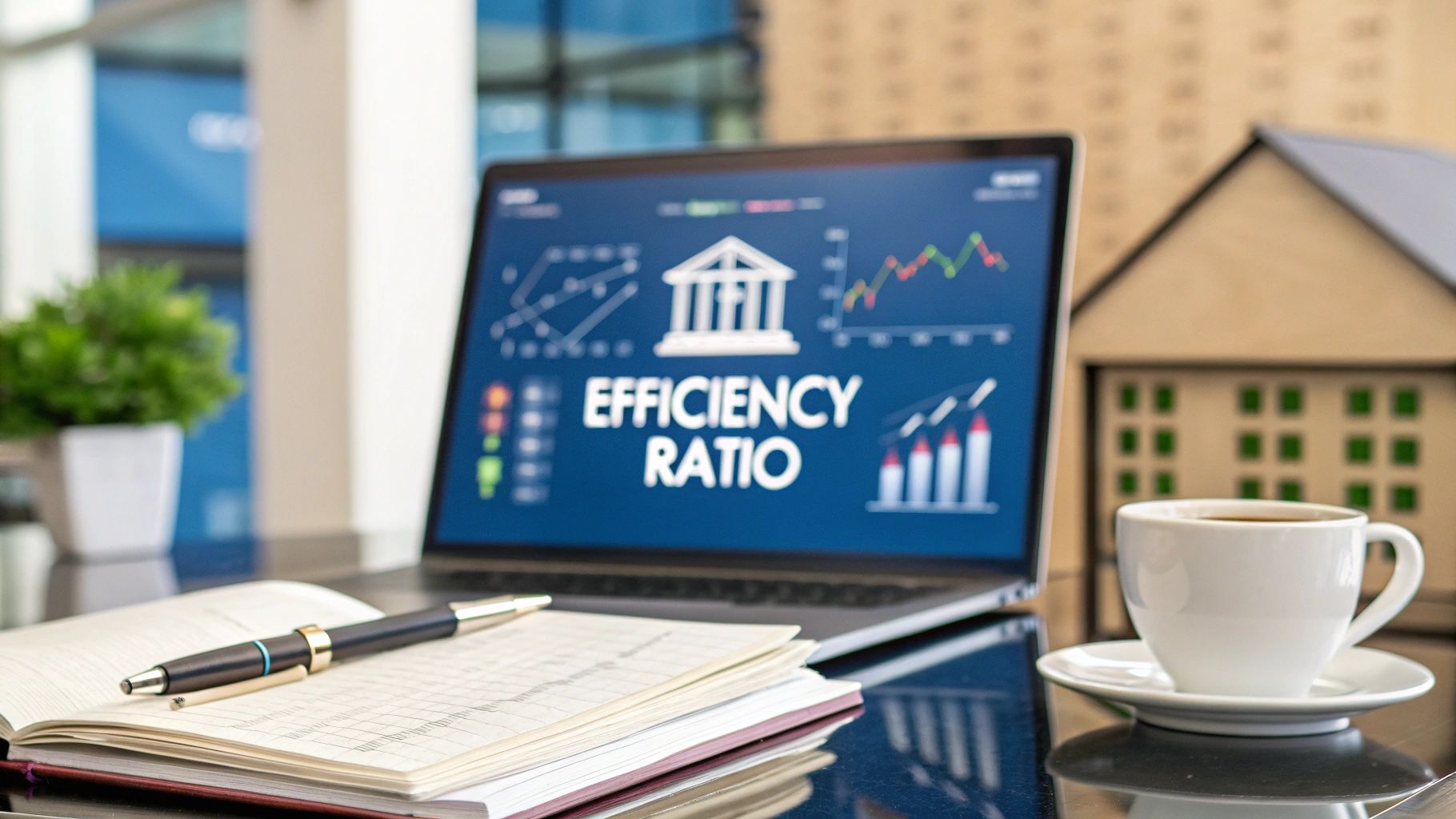← Back to News
What the Efficiency Ratio Tells You About a Bank
Banking Knowledge Base4/6/2025Banking Knowledge Base

Efficiency Ratio
The efficiency ratio is a critical metric in banking that measures a bank's ability to manage its expenses relative to its revenue. Understanding this ratio helps stakeholders assess a bank's operational efficiency and cost management. This guide explores the components of the efficiency ratio, ideal benchmarks, and strategies for improving operational performance. https://visbanking.com/contact/Table of Contents
What Is the Efficiency Ratio?
The efficiency ratio is a financial metric used in banking to assess how effectively a bank is managing its expenses relative to its revenue. It is calculated by dividing noninterest expenses by net revenue (the sum of net interest income and noninterest income). A lower efficiency ratio indicates better cost management and operational efficiency, as it means the bank is spending less to generate each dollar of revenue. This ratio is a key indicator of a bank's financial health and operational performance.How Banks Measure Operational Efficiency
Banks measure operational efficiency by analyzing their efficiency ratio alongside other financial metrics. This involves assessing the bank's ability to control costs while maximizing revenue. Operational efficiency is influenced by factors such as cost management, revenue generation, and technological investments. By monitoring these elements, banks can identify areas for improvement and implement strategies to enhance their efficiency ratio, ultimately leading to improved profitability and competitiveness.Ideal Efficiency Ratios: Benchmarks to Know
While the ideal efficiency ratio can vary depending on the bank's size, business model, and market conditions, a ratio below 60% is generally considered strong. This benchmark indicates that the bank is effectively managing its expenses relative to its revenue. However, it's important to compare the efficiency ratio against industry peers and historical performance to gain a comprehensive understanding of a bank's operational efficiency. A consistently low efficiency ratio suggests effective cost control and revenue optimization.How Noninterest Expenses Impact Efficiency
Noninterest expenses, which include salaries, rent, and technology costs, play a significant role in determining a bank's efficiency ratio. High noninterest expenses can negatively impact the ratio, indicating potential inefficiencies in cost management. To improve the efficiency ratio, banks must focus on controlling these expenses while maintaining or increasing revenue. This involves optimizing operational processes, investing in technology, and implementing cost-saving initiatives to enhance overall efficiency and profitability.Reducing Operational Costs to Improve Ratio
Reducing operational costs is a key strategy for improving a bank's efficiency ratio. This can be achieved through various means, such as streamlining processes, adopting technology-driven solutions, and renegotiating vendor contracts. Additionally, banks can focus on enhancing employee productivity and implementing data-driven decision-making to optimize resource allocation. By effectively managing operational costs, banks can improve their efficiency ratio, leading to increased profitability and a stronger competitive position in the market.FAQs on Efficiency Ratios
What is a good efficiency ratio for banks?
A good efficiency ratio for banks is typically below 60%, indicating effective cost management and operational efficiency.How do you calculate banking efficiency?
Banking efficiency is calculated using the efficiency ratio, which is the ratio of noninterest expenses to net revenue (net interest income plus noninterest income).Why is the efficiency ratio important?
The efficiency ratio is important because it provides insights into a bank's cost management and operational performance, impacting profitability and competitiveness.Similar Articles

Brian's Banking Blog
Mastering The Banking Efficiency Ratio: A Guide for Bank Executives

Brian's Banking Blog
Mastering Banking Performance Metrics: A Guide for Executives

Brian's Banking Blog
Loan to Deposit Ratio Definition: A Strategic Guide for Bank Executives

Brian's Banking Blog
A Guide to Performance Measurement Systems for Bank Executives

Brian's Banking Blog
Mastering the Non Performing Loans Ratio for Strategic Advantage

Brian's Banking Blog
Uniform Bank Performance Reports: A Strategic Guide for Bank Executives

Brian's Banking Blog
Mastering Operations in the Banking Industry for Strategic Advantage

Brian's Banking Blog
Net Interest Margin in Banks: A Strategic Guide for Executives

Brian's Banking Blog
A Guide to Capital Ratios for Banks: Beyond Compliance to Strategic Advantage

Brian's Banking Blog